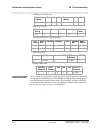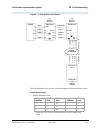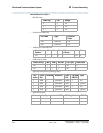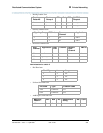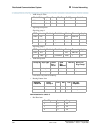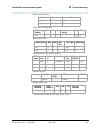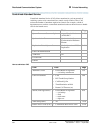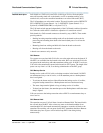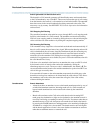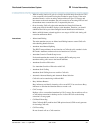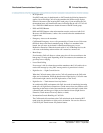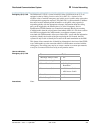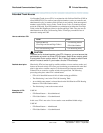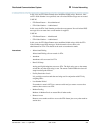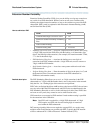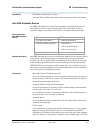
Distributed Communications System B Private Networking
Administration for Network Connectivity
CID: 77730 555-233-504 — Issue 1 — April 2000
340
Branch-generated call-identification tones
The branch in a CAS network generates call-identification tones and transmits them
to the CAS attendant by way of the RLT. These tones indicate the type of call coming
from the branch or the status of a call extended to or held at the branch. The attendant
hears these tones in the console handset before being connected to the caller. The
tones may vary by country. See DEFINITY ECS Console Operations for information
on these tones.
CAS Outgoing Call Routing
The centralized attendant at the main has access, through RLTs, to all outgoing trunk
facilities at the branches in a CAS network. The attendant can extend an incoming
LDN call to an outgoing trunk at a branch by dialing the access code and allowing the
caller to dial the rest of the number or by dialing the complete outgoing number.
CAS Incoming Call Routing
Calls extended to busy single-line voice terminals at the branch wait automatically. If
there is a call in queue, the user hears a busy signal. When station hunting and send all
calls is administered, the call routes along the administered path. Not answering any
waiting extended call within an administered interval causes the branch switch to
return the call to the attendant. Call Waiting does not apply to multiappearance
terminals; if no appearances are available, busy tone is sent to the attendant, who tells
the caller that the line is busy.
Calls from voice terminals at the branch to an attendant also route over RLTs seized
by the branch switch. A branch caller reaches the attendant by dialing the
attendant-group access code. The access code is administrable; the default is 0. The
conversation between the branch caller and the attendant ties up the seized RLT, but
calls of this type are usually short.
If an extended call returns to the main attendant unanswered, the called party at the
branch does not drop but continues to be alerted until the caller releases. This allows
the attendant to talk to the caller, then extend the call again, if the caller wishes,
without redialing the number.
Considerations Branch Attendants
•
A branch can have an attendant. Access to the branch attendant must be by way of
an individual attendant extension. Incoming trunk calls in a CAS network can
bypass branch attendants but can be routed back to them by the centralized
attendant.
• Branch calls terminate on the CAS main switch based on the incoming RLT
trunk-group day-destination or night-service destination. An attendant console is
not always answering or extending incoming CAS calls. If someone other than an
attendant answers a CAS call, that person can extend the call back to the branch
by pressing the FLASH button on a multiappearance voice terminal or flashing the
switchhook on a single-line voice terminal. The branch reaction to Flash Signals
and the branch application of tones is the same whether an attendant or someone
other than an attendant answers or extends the call.



